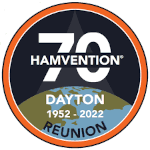 Cruising the Blue Ridge Parkway
Cruising the Blue Ridge Parkway

In May, we met up with our friends Paul/KF9EY and Beth/KB9DOU for a trip on the Blue Ridge Parkway. Joyce/K0JJW and I had been on the parkway before but had not completed the whole route. We all thought it would be a great trip to do together, in about a week, so we would not be in a rush. Both couples have Class B RVs (camper vans), which are well-suited for such a trip.
The Blue Ridge Parkway is part of the National Park Service, construction started in the 1930s and took decades to complete. The basic concept is a scenic road with a maximum speed limit of 45 MPH connecting Great Smoky Mountain National Park and Shenandoah National Park. We met at the Smoky Mountain end of the parkway and traveled north to Shenandoah.
Of course, we included some Summits On The Air (SOTA) and Parks On The Air (POTA) activations. The Blue Ridge area is target-rich with SOTA and POTA opportunities.
Clingmans Dome
Our first Summits On The Air (SOTA) activation was from Clingmans Dome (W4C/WM-001), the highest spot in the Great Smoky Mountain NP. This is an easy activation with a half-mile hike (one way) to an observation tower. See my previous trip report here.
We opted for a simple VHF SOTA activation, using a Yaesu FT-2DR handheld transceiver and an RH-770 whip antenna. The observation tower was not too crowded and we were able to make a surprising number of 2m FM radio contacts. We just called CQ on 146.52 and raised a number of home stations, mobile stations, and a few campers. Joyce, Paul, and I all completed at least 10 contacts so we decided to submit the activation for both POTA and SOTA.

Blue Ridge Parkway
Then we headed up the parkway, stopping along the way for photo opportunities, a winery visit, lunch stops, and short hikes. We stayed at different campgrounds for three nights along the parkway. To activate the parkway for POTA (K-3378), we stopped at a picnic area for lunch and set up for 20m SSB. We used our typical POTA setup: Yaesu FT-991 driving an end-fed-halfwave antenna supported by a fishing pole.

The station worked well for us but it was a little slow completing contacts on 20m. A 20 AH Bioenno battery supplied the DC power for the FT-991 and we kept the RF output at around 50 watts. I used HAMRS on my Windows PC for logging and it worked well for me. (That logging program keeps getting better with each revision.) Paul and Joyce preferred to log using old-fashioned pen and paper.

Loft Mountain Campground
We camped the last two nights of our trip together at Loft Mountain Campground in Shenandoah NP. This is a rather unique spot in that the campground is located on top of a broad SOTA summit and is inside a national park. The SOTA summit is appropriately named Big Flat Mountain (W4V/BR-009), while Shenandoah NP is park K-0064. This makes for an easy SOTA plus POTA activation.
The summit is located inside the National Radio Quiet Zone, which may require you to coordinate with the NRQZ before operating. However, the W4V Association Reference Manual says that “the typical SOTA activation does not require coordination,” mainly because it is a short-term, temporary radio activity.
Once again, we operated midday on 20m SSB and had reasonably good propagation. Joyce and I made some stateside contacts but when Paul took over, he snagged a couple of European stations. That might be due to his superior operating skill or maybe the band just shifted. Between the three of us, we made 45 QSOs in about an hour or so.
Summary
We had a fun time on this trip, which is another example of blending SOTA and POTA activities with a camping vacation. Our “leisurely pace” strategy worked out well and we were never in a hurry. Of course, there are always more things we could have done. The Blue Ridge Parkway has plenty of interesting tourist, hiking, and SOTA/POTA opportunities. Too many to do in a week.
73 Bob K0NR
The post Cruising the Blue Ridge Parkway appeared first on The KØNR Radio Site.
Bob Witte, KØNR, is a regular contributor to AmateurRadio.com and writes from Colorado, USA. Contact him at [email protected].
 Ham College 89
Ham College 89
Ham College episode 89 is now available for download.
E6D Toroidal and Solenoidal Inductors: permeability, core material, selecting, winding, transformers, piezoelectric devices
George Thomas, W5JDX, is co-host of AmateurLogic.TV, an original amateur radio video program hosted by George Thomas (W5JDX), Tommy Martin (N5ZNO), Peter Berrett (VK3PB), and Emile Diodene (KE5QKR). Contact him at [email protected].
 A History and Critique of Field Day Logos
A History and Critique of Field Day Logos
My favorite amateur radio event of the year, by far, is Field Day. Each year ARRL issues a new Field Day logo. Let’s take a look at logos of years past.
First, let’s get the mediocre ones out of the way.

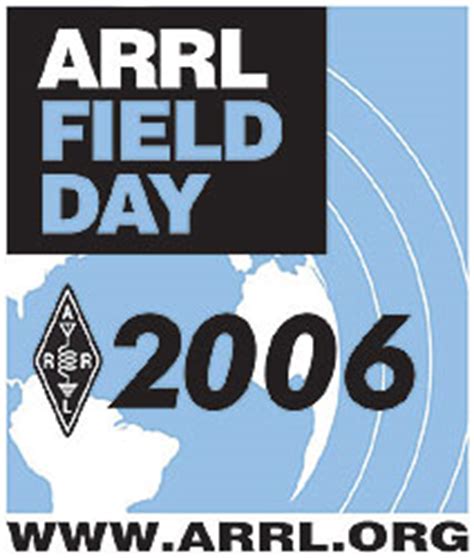
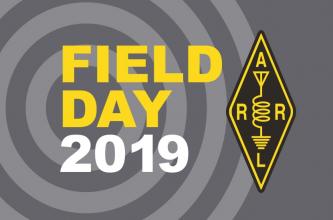
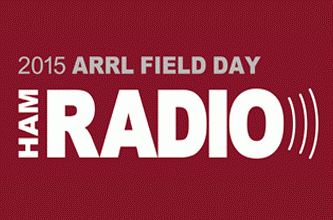


Now let’s look at some good logos.
2007 and 2013 had cute cartoon logos. Not bad.
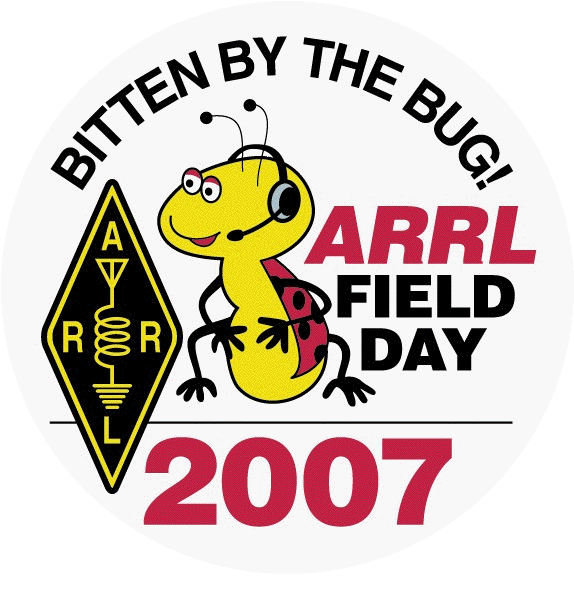
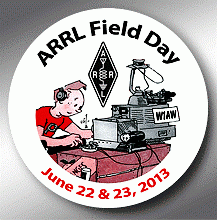
2005 and 2014 were yagi antenna years.



Radio waves are a common theme, as seen in the 2006, 2015, 2019, 2010, and 2022 logos. In 2008 we had Ride the Waves, but with a sine wave representation. (Hey, why are there two of us transmitting on the same frequency?) This logo is nice. It is visually appealing, free-flowing, yet more sophisticated than a lot of the logos. But ditch the yellow. Please.


2016 and 2017 had monochrome style designs. I like both of these as they have a simple, yet cool feeling. 2017 was another yagi year, though we got stacked yagis as a bonus. Are those more radio waves, and emanating from a boot? In any case, I give FD16 an A+ for the outdoorsy color choice and the hiking boot footprint. Well done.



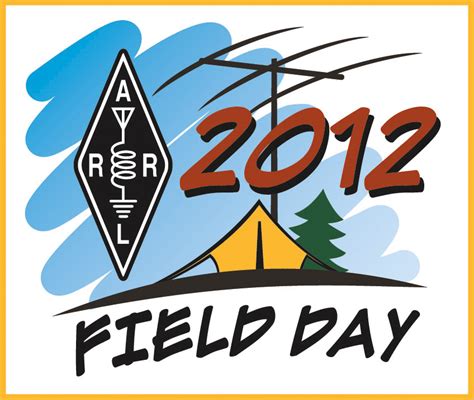
And now for the best logo, evar…

This article was originally posted on Radio Artisan.
Anthony, K3NG, is a regular contributor to AmateurRadio.com.
 LHS Episode #468: Hamvention 2022 Deep Dive
LHS Episode #468: Hamvention 2022 Deep Dive
Welcome to Episode #468 of Linux in the Ham Shack. The hosts are back from Dayton Hamvention 2022 and have stories to share about their experiences. We touch on everything from booth visits from other podcasters to hedonism on the road to everything else under the sun. We want to thank everyone who listens to and supports our program for getting us to Hamvention for another successful conference in Ohio. We hope to do it all again in 2023.
73 de The LHS Crew
Russ Woodman, K5TUX, co-hosts the Linux in the Ham Shack podcast which is available for download in both MP3 and OGG audio format. Contact him at [email protected].
 Hunting For NDBs in CLE280
Hunting For NDBs in CLE280
It's CLE time once again. This is a challenge for all newcomers to NDB listening and the ultimate test of your medium frequency receiving capabilities. Can you meet the challenge?
When tuning for NDBs, put your receiver in the CW mode and listen for the NDB's CW identifier, repeated every few seconds. Listen for U.S. NDB identifiers approximately 1 kHz higher or lower than the published transmitted frequency since these beacons are modulated with a 1020 Hz tone approximately.
For example, 'AA' near Fargo, ND, transmitted on 365 kHz and its upper sideband CW identifier was tuned at 366.025 kHz while its lower sideband CW ident could be tuned at 363.946 kHz. Its USB tone was actually 1025 Hz while its LSB tone was 1054 Hz.
Often, one sideband will be much stronger than the other so if you don't hear the first one, try listening on the other sideband.
Canadian NDBs normally have an USB tone only, usually very close to 400 Hz. They also have a long dash (keydown) following the CW identifier.
All NDBs heard in North America will be listed in the RNA database (updated daily) while those heard in Europe may be found in the REU database. Beacons heard outside of these regions will be found in the RWW database.
From CLE organizers comes the following CLE info:
Hello all
Our 280th Co-ordinated Listening Event is almost here.
Can new 'listening eventers' join in too? YES, PLEASE!
Joachim and I are always pleased to help first-time CLE logs through the harvester program.
Days: Friday 27 May - Monday 30 May
Times: Start and End at midday, your LOCAL time
Range: 350.0 - 369.9 kHz
Please log all the NDBs you can identify that are listed in this range (it includes 350 kHz but not 370) plus any UNIDs that you come across there.
You can find full information to help you, including seeklists made from REU/RNA/RWW, by going to the CLE page http://www.ndblist.info/cle.htm and clicking on CLE Seeklist there.
Please send your 'Final' CLE log to the List, if possible as a plain text email and not in an attachment and - important - with 'CLE280' and 'FINAL'
in its title.
Please show the following main items FIRST on EVERY line of your log:
# The full Date (e.g. 2022-05-27) or just the day (e.g. 27)
and UTC (the day changes at 00:00 UTC).
# kHz - the beacon's nominal published frequency, if you know it.
# The Call Ident.
Optional details such as Location and Distance go LATER in the same line.
Please always include details of your own location and brief details of the receiver, aerial(s), software and any other equipment you were using.
Joachim or I will send the usual 'Any More Logs?' email at about 20:00 UTC on Tuesday so you can check that your log has been found OK.
Make sure that your log has arrived at the very latest by 08:00 UTC on Wednesday 1 June. We hope to make all the combined results within a day or so.
Good listening
Brian
-------------------------------------------------------------------
From: Brian Keyte G3SIA ndbcle'at'gmail.com
Location: Surrey, SE England (CLE coordinator)
-------------------------------------------------------------------
(Reminder: If you wish you can use a remote receiver for your loggings, stating its location and owner - with their permission if required.
A remote listener may NOT also use another receiver, whether local or remote, to obtain further loggings for the same CLE)
These listening events serve several purposes. They
• determine, worldwide, which beacons are out-of-service or have gone silent since the last CLE covering this range
• will indicate the state of propagation conditions at the various participant locations
• will give you an indication of how well your LF/MF receiving system is working
• give participants a fun yet challenging activity to keep their listening skills honed
Final details can be found at the NDB List website, and worldwide results, for every participant, will be posted there a few days after the event.
The NDB List Group is a great place to learn more about the 'Art of NDB DXing' or to meet other DXers in your region. There is a lot of good information available there and new members are always very welcome. As well, you can follow the results of other CLE participants from night to night as propagation is always an active topic of discussion.
You need not be an NDB List member to participate in the CLEs and all reports, no matter how small, are of much value to the organizers.
Remember - 'First-time' logs are always VERY welcome!
Reports may be sent to the NDB List Group or e-mailed to CLE co-ordinator, Brian Keyte (G3SIA), whose address appears above. If you are a member of the group, all final results will also be e-mailed and posted there.
Please ... give the CLE a try ... then let us know what NDB's can be heard from your location! Your report can then be added to the worldwide database to help keep it up-to-date.
Have fun and good hunting!
Steve McDonald, VE7SL, is a regular contributor to AmateurRadio.com and writes from British Columbia, Canada. Contact him at [email protected].
 ICQ Podcast Episode 377 – On the Cusp of a Scientific Revolution?
ICQ Podcast Episode 377 – On the Cusp of a Scientific Revolution?
In this episode, Martin Butler (M1MRB) is joined by Frank Howell K4FMH, Edmund Spicer M0MNG and Ed Durrant DD5LP to discuss the latest Amateur / Ham Radio news. Colin (M6BOY) rounds up the news in brief and in the episode's feature On the Cusp of a Scientific Revolution?
We would like to thank our monthly and annual subscription donors for keeping the podcast advert free. To donate, please visit - http://www.icqpodcast.com/donate
- Two Students Aged 10 and 11 Get Ham Radio Licenses
- Radio Hams to Show off Skills During Field Day Event
- 6177km (3838 mi) QSO in FM 10 Metres Frequency 29.600 MHz
- Wireless Power Transmission Using 10 GHz
- England Queen's Platinum Jubilee Special Event
- Founders' Trophy Award
- Heil Ham Radio Rebrand
- RSGB Commonwealth Games Activities
Colin Butler, M6BOY, is the host of the ICQ Podcast, a weekly radio show about Amateur Radio. Contact him at [email protected].
 Don’t Look Back! They Might Be Gaining On You…or the emergence of the premium HF transceiver
Don’t Look Back! They Might Be Gaining On You…or the emergence of the premium HF transceiver
The old quote attributed to the iron man of baseball, Satchel Paige, about not looking back is what I thought of as I posted my latest page in my new Sherwood Tools section of the FoxMikeHotel.com website. The emergence of the premium HF transceiver is the focus of much discussion, rants and downright fistfights in the kitchen to paraphrase a research methods text. Such a topic is ripe for statistical analysis using best-available data. I’ve tried to do that in this new page of tools to use to shape your thinking about pulling the trigger on a premium HF transceiver. In this market? How could you not use all the evidence available to you?
The Sherwood Tables are the basis of that data with the addition of the market-entry price and year. The focus is: who invented the premium transceiver? Well, it wasn’t Hilberling although at $20,000 in 2021 US Dollars that might be a good guess. Head over to this page to see by clicking here.
If you’re heading to Hamvention, it might be a good time to check the graphics out before making a decision. If you’re sitting this one out, it’s a great time to review what I have posted there. I understand Rob NC0B will feature these tools at his talk—Transceiver Performance for the HF Contest and DX Operator— for Contest University.
Frank Howell, K4FMH, is a regular contributor to AmateurRadio.com and writes from Mississippi, USA. Contact him at [email protected].


